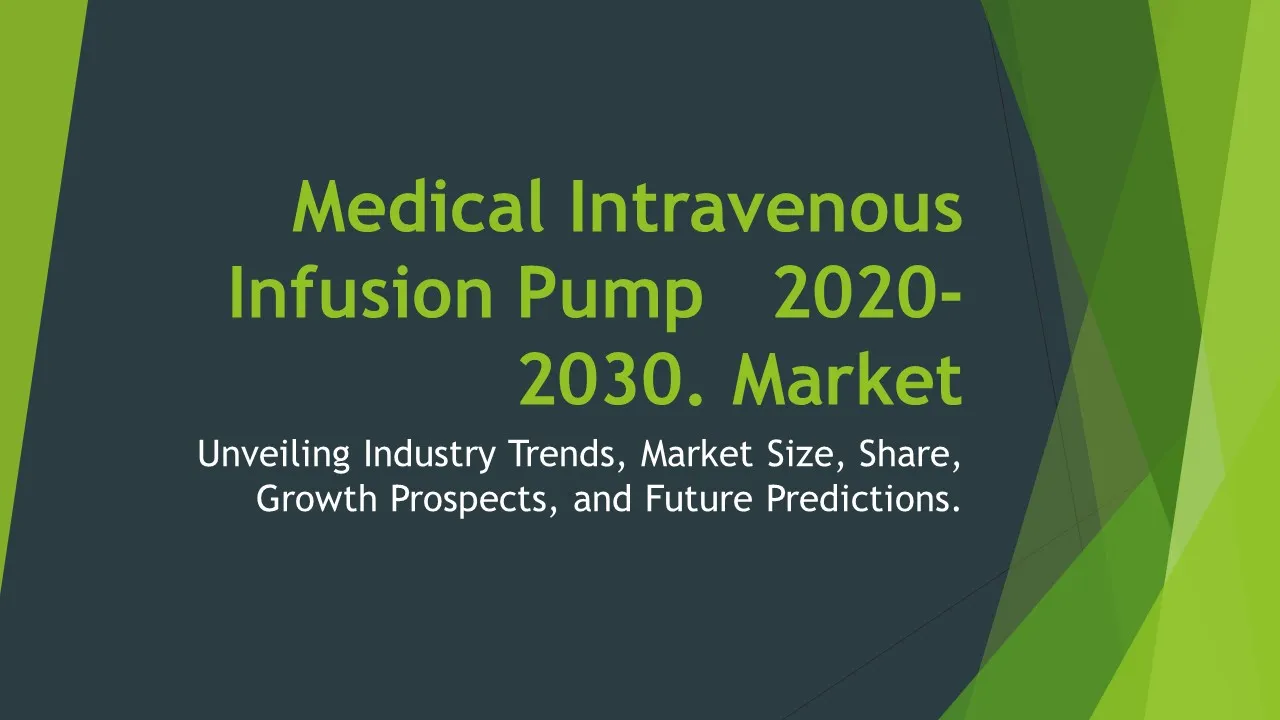Haemophilus Influenzae Type B Vaccine
Haemophilus Influenzae Type B Vaccine Market Segments - by Product Type (Conjugate Vaccines, Polysaccharide Vaccines, Combination Vaccines, and Others), Application (Pediatric Vaccination, Adult Vaccination), Distribution Channel (Hospitals, Clinics, Retail Pharmacies, and Online Pharmacies), Ingredient Type (Hib Polysaccharide, Protein Carrier), and Region (North America, Europe, Asia Pacific, Latin America, Middle East & Africa) - Global Industry Analysis, Growth, Share, Size, Trends, and Forecast 2025-2035
- Report Preview
- Table Of Content
- Segments
- Methodology
Haemophilus Influenzae Type B Vaccine Market Outlook
The global Haemophilus Influenzae Type B (Hib) vaccine market is poised for significant growth, anticipated to reach USD 4.2 billion by 2035, growing at a compound annual growth rate (CAGR) of 6.1% from 2025 to 2035. This upward trend is primarily driven by the increasing prevalence of infectious diseases, ongoing vaccination programs, and heightened awareness regarding the importance of immunization. Moreover, various government initiatives aimed at improving vaccination coverage among the pediatric population are expected to contribute substantially to market expansion. The rising healthcare expenditure across emerging economies, as well as the growing focus on preventive healthcare measures, further bolster the market’s growth potential. As healthcare systems evolve, the Hib vaccine market is expected to witness innovations in vaccine technology and delivery methods, fostering greater access and effectiveness in preventing serious bacterial infections.
Growth Factor of the Market
One of the primary growth factors for the Haemophilus Influenzae Type B vaccine market is the increasing incidence of diseases caused by Hib, particularly in children under five years old. As awareness grows regarding the severe consequences of Hib infections, such as meningitis and pneumonia, parents and healthcare providers are prioritizing vaccinations. Additionally, the implementation of programs by global health organizations, including the World Health Organization (WHO), to eliminate Hib-related diseases in low-income countries has accelerated vaccine uptake. The surge in immunization initiatives and campaigns, particularly in developing regions, highlights a global commitment to combatting infectious diseases, thus propelling the Hib vaccine market forward. Furthermore, advancements in vaccine development and the introduction of new vaccine formulations are attracting more investments from pharmaceutical companies, further enhancing market growth prospects.
Key Highlights of the Market
- Significant year-on-year growth in vaccination rates among children due to various health campaigns.
- Expansion of Hib vaccine availability in remote and underserved regions through governmental health programs.
- Collaboration between pharmaceutical companies and healthcare organizations to improve vaccine formulations.
- Rising awareness regarding the benefits of vaccination leading to increased demand across age groups.
- Technological advancements in vaccine production enhancing efficacy and accessibility.
By Product Type
Conjugate Vaccines:
Conjugate vaccines constitute a significant segment of the Hib vaccine market due to their enhanced immunogenicity and long-lasting immunity. These vaccines combine the polysaccharide of the Hib bacterium with a protein carrier, significantly improving the immune response, particularly in infants and young children. The formulation of conjugate vaccines has proven to be effective in reducing the incidence of invasive Hib diseases, leading to their widespread adoption in national immunization programs across various countries. This segment's growth is further supported by ongoing research and development efforts aimed at enhancing vaccine efficacy and safety, which are essential for sustaining immunization coverage in pediatric populations. Given their proven effectiveness and safety profile, conjugate vaccines are anticipated to dominate the product type segment in the foreseeable future.
Polysaccharide Vaccines:
Polysaccharide vaccines play a crucial role in the Hib vaccine market, particularly for older children and adults who are at increased risk of infections. These vaccines are formulated using purified polysaccharides from the Hib bacteria, providing a robust immune response. However, while effective, polysaccharide vaccines do not elicit a strong immune memory, making them less suitable for infants. Despite this limitation, the polysaccharide vaccine segment remains relevant and is recommended for specific high-risk populations, including individuals with certain medical conditions. The segment's growth is supported by ongoing awareness initiatives focused on the importance of vaccination in preventing Hib infections, particularly in groups that may not have received prior vaccinations during childhood.
Combination Vaccines:
Combination vaccines have gained traction within the Hib vaccine market due to their convenience and ability to protect against multiple pathogens with a single administration. These vaccines typically include the Hib vaccine along with other vaccines, such as those for diphtheria, tetanus, and pertussis. The primary advantage of combination vaccines is that they reduce the number of injections required, which can enhance compliance among parents and caregivers, thereby increasing immunization rates. The growing emphasis on convenience and the streamlining of vaccination schedules are expected to drive demand for combination vaccines, contributing to their market growth. Moreover, combination vaccines help to reduce healthcare costs associated with multiple vaccination visits, making them an attractive option for both healthcare providers and patients.
Others:
This category includes various other formulations and novel vaccine delivery systems that do not fall under the traditional classifications of conjugate, polysaccharide, or combination vaccines. Ongoing research in vaccine technology may lead to the development of innovative delivery methods, such as intranasal or oral vaccines, which could revolutionize the Hib vaccination landscape. While currently limited, the potential for these other vaccine types to enter the market presents an intriguing opportunity for growth. As the healthcare sector increasingly stresses the importance of accessibility and ease of administration, the development of these alternative vaccine forms may attract significant interest from both pharmaceutical companies and healthcare providers.
By Application
Pediatric Vaccination:
Pediatric vaccination represents the largest application segment within the Hib vaccine market, driven largely by the need to protect infants and young children from severe Hib infections. Vaccination is typically initiated in infancy, with multiple doses administered during the early years to ensure optimal immunity. The high incidence of Hib-related diseases in children further underscores the critical nature of this application segment. With a concerted focus on increasing vaccination coverage in pediatric populations, health authorities worldwide are intensifying efforts to educate parents about the importance of timely immunization. Additionally, the integration of Hib vaccines into routine childhood vaccination schedules has been instrumental in reducing the disease burden on a global scale, bolstering this segment's growth trajectory.
Adult Vaccination:
While adult vaccination against Hib is less common than pediatric vaccination, it remains a vital segment, particularly for individuals with underlying health conditions or those at higher risk for severe infections. The adult vaccination segment is expected to experience growth as healthcare professionals increasingly recognize the importance of immunizing adults, particularly elderly individuals and those with compromised immune systems. Awareness campaigns targeting high-risk groups are critical to improving vaccination rates among adults. Moreover, as the global healthcare landscape evolves and prioritizes preventive measures, the importance of adult vaccinations, including Hib, will likely gain more attention, contributing to the overall market growth.
By Distribution Channel
Hospitals:
Hospitals are a dominant distribution channel for Hib vaccines, serving as key centers for vaccination services and immunization programs. With extensive resources and healthcare professionals on-site, hospitals play a critical role in administering vaccines, educating patients and families, and maintaining vaccination records. Many hospitals also run specialized vaccination clinics or collaborate with public health initiatives to ensure comprehensive coverage for patients. As hospitals continue to enhance their immunization programs and streamline vaccine delivery processes, this distribution channel is expected to witness sustained demand for Hib vaccines, contributing significantly to overall market growth.
Clinics:
Clinics serve as important distribution points for Hib vaccines, particularly in outpatient settings. Community health clinics and pediatric clinics often provide vaccination services, making them accessible to families seeking immunization for their children. The convenience of clinics, along with shorter wait times compared to hospitals, has made them a preferred choice for many parents when it comes to vaccinations. As awareness regarding the significance of timely immunization grows, clinics are likely to see an increase in demand for Hib vaccines, further strengthening their role in the vaccination landscape.
Retail Pharmacies:
Retail pharmacies have emerged as an important distribution channel for vaccines, including the Haemophilus Influenzae Type B vaccine. They offer convenience and accessibility, making it easier for families to obtain vaccines without the need for a doctor's visit. Many retail pharmacies have adopted immunization services and have trained pharmacists to administer vaccines, further enhancing public access to vaccinations. This trend is expected to foster greater vaccination rates, especially in areas where access to healthcare facilities is limited. The ongoing expansion of pharmacy-based vaccination services is likely to drive growth within this distribution channel.
Online Pharmacies:
Online pharmacies represent a growing distribution channel, particularly in response to the increasing trend towards digital healthcare solutions. While the direct administration of vaccines via online platforms is not feasible, online pharmacies can facilitate vaccine consultations, appointments, and education, helping to streamline the vaccination process. Additionally, they can provide information about vaccine availability and direct users to local vaccination centers. As telehealth services expand, the integration of online pharmacies into the vaccination landscape presents an opportunity to enhance access and awareness regarding Hib vaccination, particularly in underserved areas.
By Ingredient Type
Hib Polysaccharide:
The Hib polysaccharide serves as a critical ingredient in the formulation of Hib vaccines, playing a key role in eliciting an immune response against the bacteria. This polysaccharide component is crucial for the development of both polysaccharide and conjugate vaccine types, as it helps stimulate the production of antibodies to combat Hib infections. The growing understanding of the importance of Hib polysaccharide in vaccine efficacy has driven research and innovation aimed at optimizing its use in various formulations. As the focus on preventing Hib-related diseases intensifies, the demand for vaccines incorporating Hib polysaccharide is expected to remain robust over the forecast period.
Protein Carrier:
Protein carriers are an essential component of conjugate vaccines, designed to enhance the immunogenicity of the Hib polysaccharide. The incorporation of protein carriers helps to facilitate stronger immune responses, particularly in infants and young children, who may not respond effectively to polysaccharide-only vaccines. Various protein carriers, such as tetanus toxoid or diphtheria toxoid, are used to create a more effective vaccination strategy. As ongoing research continues to explore new protein carrier formulations and their potential for maximizing vaccine efficacy, this ingredient type is anticipated to experience growth alongside the rising demand for conjugate vaccines.
By Region
Regional Analysis
In North America, the Hib vaccine market is expected to maintain a significant share, primarily driven by well-established vaccination programs and high healthcare spending. The region is witnessing a strong emphasis on preventive healthcare measures, supported by policies and funding aimed at improving immunization coverage. With substantial resources allocated to public health initiatives, North America contributes to a notable percentage of the global market, boasting an anticipated CAGR of 5.6% from 2025 to 2035. The strong collaboration between healthcare providers and community organizations has further facilitated the promotion and distribution of the Hib vaccine, ensuring robust coverage within the population.
In Europe, the Hib vaccine market is also poised for considerable growth, fueled by the implementation of comprehensive vaccination programs across member countries. European nations typically exhibit high vaccination rates for children, driven by public health policies and recommendations from health authorities. The demand for Hib vaccines is expected to rise as more countries emphasize the importance of routine immunizations, particularly in light of recent outbreaks of preventable diseases. Together, these factors ensure that Europe remains a significant player in the global Hib vaccine market, contributing to overall growth in the coming years.
Opportunities
The Haemophilus Influenzae Type B vaccine market presents numerous opportunities for growth driven by increasing awareness regarding vaccine-preventable diseases. Public health campaigns that aim to educate communities about the importance of vaccination and the specific risks associated with Hib infections are crucial in enhancing vaccination rates, particularly in underserved populations. As governments and health organizations continue to invest in improving access to vaccines, the market is likely to witness a surge in demand. Additionally, emerging technologies in vaccine production and delivery, such as innovative formulations and digital health solutions, offer new avenues for expanding immunization coverage and efficiency. As the healthcare sector continues to evolve, the integration of these advancements can facilitate the development of targeted vaccination strategies, ultimately benefiting the Hib vaccine market.
Moreover, the potential for collaboration between pharmaceutical companies and public health organizations presents further opportunities within the Hib vaccine landscape. By working together, stakeholders can enhance vaccine distribution networks, streamline immunization efforts, and leverage shared resources to achieve greater public health outcomes. The ongoing emphasis on preventive healthcare and vaccination initiatives, particularly following the impact of recent global health crises, underscores a growing commitment to reducing the burden of infectious diseases. As the importance of vaccination becomes increasingly recognized, those involved in the Hib vaccine market can capitalize on this trend to foster growth, drive innovation, and improve healthcare outcomes.
Threats
The Hib vaccine market faces several potential threats that could hinder its growth trajectory. One significant challenge is vaccine hesitancy, fueled by misinformation regarding vaccine safety and efficacy. In recent years, public skepticism surrounding vaccinations has increased, leading to lower vaccination rates in certain populations. This trend poses a considerable threat to achieving herd immunity against Hib and could result in outbreaks of preventable diseases, thereby undermining public health efforts. Addressing vaccine hesitancy requires targeted education and outreach initiatives to build trust within communities and encourage vaccination compliance. As healthcare providers and policymakers work to combat misinformation, it is crucial to emphasize the importance of vaccines in preventing serious infections.
Another threat to the Hib vaccine market is the potential for supply chain disruptions, which can impact vaccine availability and distribution. Factors such as geopolitical issues, natural disasters, or pandemics can lead to interruptions in vaccine production and delivery, ultimately affecting immunization rates. Such disruptions highlight the importance of establishing resilient supply chains and diversified manufacturing facilities to mitigate risks. Companies within the Hib vaccine market must remain vigilant and adaptable to changing circumstances in order to ensure continuous access to vaccines for populations in need. Strengthening supply chain infrastructure and maintaining robust communication among stakeholders will be essential in navigating these challenges effectively.
Competitor Outlook
- GlaxoSmithKline plc
- Merck & Co., Inc.
- Pfizer Inc.
- Sanofi S.A.
- BioNTech SE
- Novavax, Inc.
- Serum Institute of India
- Hoffmann-La Roche AG
- Indian Immunologicals Limited
- Panacea Biotec Ltd.
- Walvax Biotechnology Co., Ltd.
- China National Pharmaceutical Group Corp.
- Takeda Pharmaceutical Company Limited
- AstraZeneca plc
- Valneva SE
The competitive landscape of the Haemophilus Influenzae Type B vaccine market is characterized by a diverse array of global players, ranging from large pharmaceutical companies to specialized vaccine manufacturers. Major companies such as GlaxoSmithKline, Merck, and Pfizer dominate the market, leveraging their extensive research and development capabilities to innovate and improve vaccine formulations. These companies have established strong relationships with healthcare providers and governments, ensuring widespread distribution and advocacy for vaccination programs. Furthermore, as the focus on preventive healthcare intensifies, these industry giants are likely to invest significantly in marketing and public health initiatives to promote vaccination uptake, solidifying their positions in the market.
In addition to the leading players, several emerging companies are carving out their niches in the Hib vaccine market, particularly in regions with increasing vaccine demand. Companies like Serum Institute of India and Indian Immunologicals Limited are actively contributing to vaccine production and distribution, addressing the needs of underserved populations. These players often collaborate with international health organizations and governmental bodies to enhance vaccine access and coverage, fostering a competitive environment that prioritizes both innovation and affordability. As the global healthcare landscape evolves, the importance of strategic partnerships between established pharmaceutical companies and emerging players will be crucial for expanding immunization efforts and achieving greater public health outcomes.
As the Hib vaccine market continues to evolve, companies are increasingly focusing on research and development initiatives aimed at advancing vaccine technologies and improving efficacy. Collaborations and partnerships between academic institutions and industry players are becoming more common, resulting in innovative vaccine formulations and delivery systems. Furthermore, ongoing investments in public health campaigns and educational programs underscore the commitment of companies to raise awareness about the benefits of vaccination and to combat the challenges posed by vaccine hesitancy. The competitive landscape will likely remain dynamic in the coming years, with market participants striving to adapt to changing healthcare needs and preferences.
1 Appendix
- 1.1 List of Tables
- 1.2 List of Figures
2 Introduction
- 2.1 Market Definition
- 2.2 Scope of the Report
- 2.3 Study Assumptions
- 2.4 Base Currency & Forecast Periods
3 Market Dynamics
- 3.1 Market Growth Factors
- 3.2 Economic & Global Events
- 3.3 Innovation Trends
- 3.4 Supply Chain Analysis
4 Consumer Behavior
- 4.1 Market Trends
- 4.2 Pricing Analysis
- 4.3 Buyer Insights
5 Key Player Profiles
- 5.1 Valneva SE
- 5.1.1 Business Overview
- 5.1.2 Products & Services
- 5.1.3 Financials
- 5.1.4 Recent Developments
- 5.1.5 SWOT Analysis
- 5.2 BioNTech SE
- 5.2.1 Business Overview
- 5.2.2 Products & Services
- 5.2.3 Financials
- 5.2.4 Recent Developments
- 5.2.5 SWOT Analysis
- 5.3 Pfizer Inc.
- 5.3.1 Business Overview
- 5.3.2 Products & Services
- 5.3.3 Financials
- 5.3.4 Recent Developments
- 5.3.5 SWOT Analysis
- 5.4 Sanofi S.A.
- 5.4.1 Business Overview
- 5.4.2 Products & Services
- 5.4.3 Financials
- 5.4.4 Recent Developments
- 5.4.5 SWOT Analysis
- 5.5 Novavax, Inc.
- 5.5.1 Business Overview
- 5.5.2 Products & Services
- 5.5.3 Financials
- 5.5.4 Recent Developments
- 5.5.5 SWOT Analysis
- 5.6 AstraZeneca plc
- 5.6.1 Business Overview
- 5.6.2 Products & Services
- 5.6.3 Financials
- 5.6.4 Recent Developments
- 5.6.5 SWOT Analysis
- 5.7 Merck & Co., Inc.
- 5.7.1 Business Overview
- 5.7.2 Products & Services
- 5.7.3 Financials
- 5.7.4 Recent Developments
- 5.7.5 SWOT Analysis
- 5.8 GlaxoSmithKline plc
- 5.8.1 Business Overview
- 5.8.2 Products & Services
- 5.8.3 Financials
- 5.8.4 Recent Developments
- 5.8.5 SWOT Analysis
- 5.9 Panacea Biotec Ltd.
- 5.9.1 Business Overview
- 5.9.2 Products & Services
- 5.9.3 Financials
- 5.9.4 Recent Developments
- 5.9.5 SWOT Analysis
- 5.10 Hoffmann-La Roche AG
- 5.10.1 Business Overview
- 5.10.2 Products & Services
- 5.10.3 Financials
- 5.10.4 Recent Developments
- 5.10.5 SWOT Analysis
- 5.11 Serum Institute of India
- 5.11.1 Business Overview
- 5.11.2 Products & Services
- 5.11.3 Financials
- 5.11.4 Recent Developments
- 5.11.5 SWOT Analysis
- 5.12 Indian Immunologicals Limited
- 5.12.1 Business Overview
- 5.12.2 Products & Services
- 5.12.3 Financials
- 5.12.4 Recent Developments
- 5.12.5 SWOT Analysis
- 5.13 Walvax Biotechnology Co., Ltd.
- 5.13.1 Business Overview
- 5.13.2 Products & Services
- 5.13.3 Financials
- 5.13.4 Recent Developments
- 5.13.5 SWOT Analysis
- 5.14 Takeda Pharmaceutical Company Limited
- 5.14.1 Business Overview
- 5.14.2 Products & Services
- 5.14.3 Financials
- 5.14.4 Recent Developments
- 5.14.5 SWOT Analysis
- 5.15 China National Pharmaceutical Group Corp.
- 5.15.1 Business Overview
- 5.15.2 Products & Services
- 5.15.3 Financials
- 5.15.4 Recent Developments
- 5.15.5 SWOT Analysis
- 5.1 Valneva SE
6 Market Segmentation
- 6.1 Haemophilus Influenzae Type B Vaccine Market, By Application
- 6.1.1 Pediatric Vaccination
- 6.1.2 Adult Vaccination
- 6.2 Haemophilus Influenzae Type B Vaccine Market, By Product Type
- 6.2.1 Conjugate Vaccines
- 6.2.2 Polysaccharide Vaccines
- 6.2.3 Combination Vaccines
- 6.2.4 Others
- 6.3 Haemophilus Influenzae Type B Vaccine Market, By Ingredient Type
- 6.3.1 Hib Polysaccharide
- 6.3.2 Protein Carrier
- 6.4 Haemophilus Influenzae Type B Vaccine Market, By Distribution Channel
- 6.4.1 Hospitals
- 6.4.2 Clinics
- 6.4.3 Retail Pharmacies
- 6.4.4 Online Pharmacies
- 6.1 Haemophilus Influenzae Type B Vaccine Market, By Application
7 Competitive Analysis
- 7.1 Key Player Comparison
- 7.2 Market Share Analysis
- 7.3 Investment Trends
- 7.4 SWOT Analysis
8 Research Methodology
- 8.1 Analysis Design
- 8.2 Research Phases
- 8.3 Study Timeline
9 Future Market Outlook
- 9.1 Growth Forecast
- 9.2 Market Evolution
10 Geographical Overview
- 10.1 Europe - Market Analysis
- 10.1.1 By Country
- 10.1.1.1 UK
- 10.1.1.2 France
- 10.1.1.3 Germany
- 10.1.1.4 Spain
- 10.1.1.5 Italy
- 10.1.1 By Country
- 10.2 Asia Pacific - Market Analysis
- 10.2.1 By Country
- 10.2.1.1 India
- 10.2.1.2 China
- 10.2.1.3 Japan
- 10.2.1.4 South Korea
- 10.2.1 By Country
- 10.3 Latin America - Market Analysis
- 10.3.1 By Country
- 10.3.1.1 Brazil
- 10.3.1.2 Argentina
- 10.3.1.3 Mexico
- 10.3.1 By Country
- 10.4 North America - Market Analysis
- 10.4.1 By Country
- 10.4.1.1 USA
- 10.4.1.2 Canada
- 10.4.1 By Country
- 10.5 Middle East & Africa - Market Analysis
- 10.5.1 By Country
- 10.5.1.1 Middle East
- 10.5.1.2 Africa
- 10.5.1 By Country
- 10.6 Haemophilus Influenzae Type B Vaccine Market by Region
- 10.1 Europe - Market Analysis
11 Global Economic Factors
- 11.1 Inflation Impact
- 11.2 Trade Policies
12 Technology & Innovation
- 12.1 Emerging Technologies
- 12.2 AI & Digital Trends
- 12.3 Patent Research
13 Investment & Market Growth
- 13.1 Funding Trends
- 13.2 Future Market Projections
14 Market Overview & Key Insights
- 14.1 Executive Summary
- 14.2 Key Trends
- 14.3 Market Challenges
- 14.4 Regulatory Landscape
Segments Analyzed in the Report
The global Haemophilus Influenzae Type B Vaccine market is categorized based on
By Product Type
- Conjugate Vaccines
- Polysaccharide Vaccines
- Combination Vaccines
- Others
By Application
- Pediatric Vaccination
- Adult Vaccination
By Distribution Channel
- Hospitals
- Clinics
- Retail Pharmacies
- Online Pharmacies
By Ingredient Type
- Hib Polysaccharide
- Protein Carrier
By Region
- North America
- Europe
- Asia Pacific
- Latin America
- Middle East & Africa
Key Players
- GlaxoSmithKline plc
- Merck & Co., Inc.
- Pfizer Inc.
- Sanofi S.A.
- BioNTech SE
- Novavax, Inc.
- Serum Institute of India
- Hoffmann-La Roche AG
- Indian Immunologicals Limited
- Panacea Biotec Ltd.
- Walvax Biotechnology Co., Ltd.
- China National Pharmaceutical Group Corp.
- Takeda Pharmaceutical Company Limited
- AstraZeneca plc
- Valneva SE
- Publish Date : Jan 21 ,2025
- Report ID : PH-65891
- No. Of Pages : 100
- Format : |
- Ratings : 4.5 (110 Reviews)









